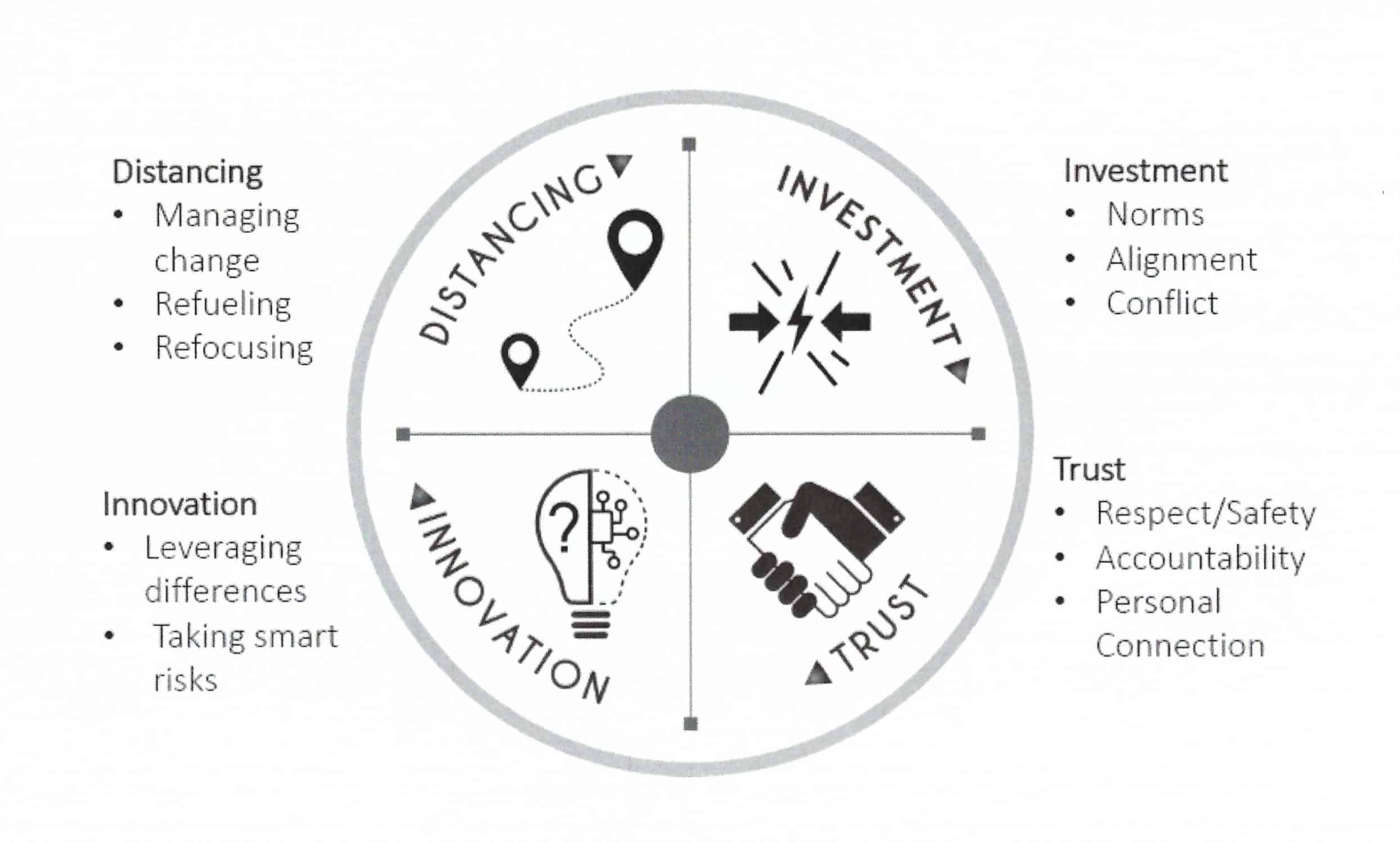All living things evolve in cycles. There’s a rhythm and a cadence that moves us from tension to resolution. The tension has a purpose. It creates the conditions necessary for the resolution. Harmony sounds best when it immediately follows dissonance. Dissonance begs for harmony.
Let’s look at this stage-by-stage. The normal discomfort of each stage of a team’s lifespan pushes the entity toward growth and change.
Investment: Coming into alignment on team values and goals happens most effectively after a period of conflict. Handled with professionalism and respect, conflict harnesses diversity as a strength. Team norms are the ground rules that bring order to chaos. There are many paths to the same destination. While we want to agree on the destination, we want to disagree on the path of the journey.
Trust: Bonds mended are often stronger than bonds never broken. The ingredients of team trust are respect, connection and accountability. Respect and connection are the rewards that follow accountability. During periods of struggle, the psychological safety of a team is tested daily. Trust tests, big and small, either strengthen or weaken the relationships within the team. Proactive communication and prompt follow-through are the easiest builders of accountability. Ownership of error is difficult for most people. Yet, when it occurs, bonds strengthen.
Innovation: Finding new solutions to unprecedented problems requires the abandonment of comfort. The foundation of mutual investment and trust provide a platform for creative tension. Smart risk-taking is easier with a safety net. Start with an impasse. Allow research to give way to discovery. Invent possible solutions and test them with rigor. Let trial and error shepherd the path. Acknowledge the failure/success ratio as a necessary requirement of problem solving.
Distancing: Abrupt and unexpected change sucks the energy out of a team. A toxic blend of anxiety and depression can threaten the team’s ability to endure time-limited adversity. When the struggles are prolonged, coping skills break down. In nature, this is when trees go dormant. They conserve their resources to get through the winter only to flourish again in the spring. Humans do this by distancing. They step back, gain perspective, refuel and then re-enter the fray to navigate their new circumstances. A stage of re-investment will soon follow and will require every ounce of this perspective and energy.
The good news of cyclical change is there’s always a chance for renewal. The normal struggle built into each stage is supposed to be there. Resist the temptation to make the symptoms go away. They are there for a reason.


